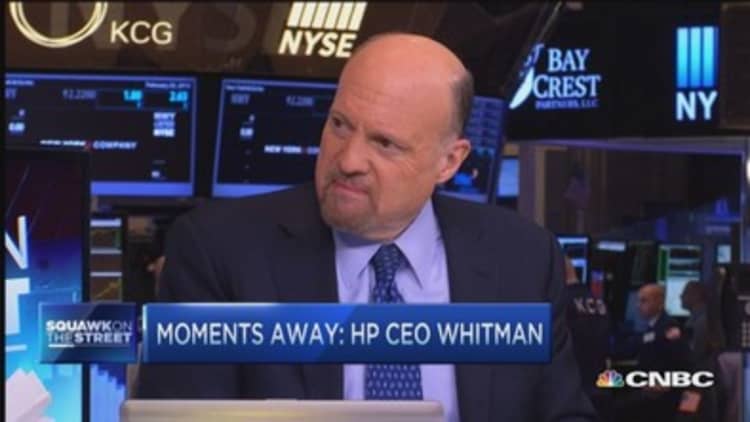They're younger, more social and have a collective spending power of $3.4 trillion—and their influence over the U.S. retail industry isn't slowing down anytime soon.
According to a new report by Nielsen, the buying power of U.S. multicultural shoppers—a group composed of race categories including Hispanic, African-American and Asian—increased by 415 percent from 1990 to 2014.
That's more than double the increase in total spending power for the country over the same period.
Combined with a surging multicultural population in the United States, the group's youthful makeup, larger average household size and digitally savvy members will all contribute to an estimated $4.1 trillion in spending power by 2019, according to Nielsen.
Read MoreDon't underestimate the power of Hispanic shoppers
"The effective years of buying … the numbers are quite a bit higher for each of the different multicultural segments," said Vanna Tran, senior manager of multicultural growth and strategy at Nielsen.
According to the report, the median age for non-Hispanic whites in the U.S. is 42. That compares with 32 for African-Americans, 35 for Asian-Americans and 27 for Hispanics.
When factoring in the average life expectancies for each of these demographics, non-Hispanic whites have the fewest years of effective buying power, at 36.7. That's followed by 42.3 years for African-Americans, 52.3 years for Asian-Americans and 56.5 years for Hispanics.
Read MoreVegas gambles on millennials with new 'bazaar'
Not only do these figures highlight the potential return on investment for retailers and consumer products companies that target multicultural shoppers, but they also change the conversation around the demographic that everyone wants a piece of: the millennials.
"The organizations are so focused on millennials, but how can we speak about millennials without looking at the multicultural quotient?" Tran said.
Still, the key to unlocking multicultural shoppers' spending power doesn't rest solely on its younger members. Thanks to higher birth rates and immigration inflows, the number of people categorized as "multicultural" is expected to reach a majority by 2044, according to U.S. Census projections.
Tran added that the influence of these shoppers spills over to other groups. Because the demographic is made up of heavy mobile and Internet users, "they become a voice and an amplifier for things that they believe." She cited the popularity of Sriracha hot sauce as one example.
What's more, because many of these shoppers are just starting families, they spend a substantial chunk of their earnings on family planning and baby products. They also tend to be more focused on beauty, driving spending for women's fragrances, men's toiletries, personal soap and bath products and skin care prep.
Fragmented retail the new norm?
Need proof that millennials are changing the consumer dynamic? Take a look at Taco Bell's kids menu—or lack thereof.
The fast-food chain in 2013 said that it would discontinue its kid-focused meals to focus on its core customers, the millennials.
Virginia Morris, vice president of global consumer and innovation strategy at Daymon Worldwide, said this is just one example of how retail is fragmenting toward different consumer groups.
In a similar vein, Morris said regions that have experienced an influx of Hispanic residents are completely transforming retail. Real estate developer The Legaspi Company has made a name for itself by repurposing malls to cater to the Latino population by bringing in food, entertainment and stores that incorporate their culture.
Read MoreMillennials redefine luxury—and the stakes are high
"When you think about the theme of retail and fragmentation, at the end of the day, it comes down to relevancy," Morris said.
Major retailers including Macy's have tweaked their merchandise to reach a particular group of consumers. Earlier this year, the department store launched an exclusive collection with Mexican singer and actress Thalia Sodi.
Getting the cold shoulder?
Despite the fact that millennials are the hot-button topic for most retailers, they can't neglect the consumer group that will retain a significant chunk of their spending power over the next 20 years: the baby boomers.
According to a recent report by FBIC analyst Deborah Weinswig, "a youth-obsessed culture and outmoded attitudes about aging" are leaving money on the table from boomers, who account for almost $3 trillion in spending each year.

Weinswig cited a 2013 report by AARP, which found that only 10 percent of U.S. marketing dollars specifically target Americans ages 50 and older. That's despite the fact that people are now working longer and living healthier than they did in the past; not to mention that people ages 55 and older control more than three-fourths of the country's household net worth, Weinswig said.
"There's so much more that can be done and should be done" to reach the boomer population, Daymon's Morris said.
Morris cautioned, however, that boomers can't be treated as one homogenous group, given that its members were born over a 20-year time span. What's more, it can be difficult to market to these shoppers, who typically don't want to be identified by their age.
"I think products and companies that can align themselves around an easier product usage or shopping experience can win, but it has to be subtle," she said.


